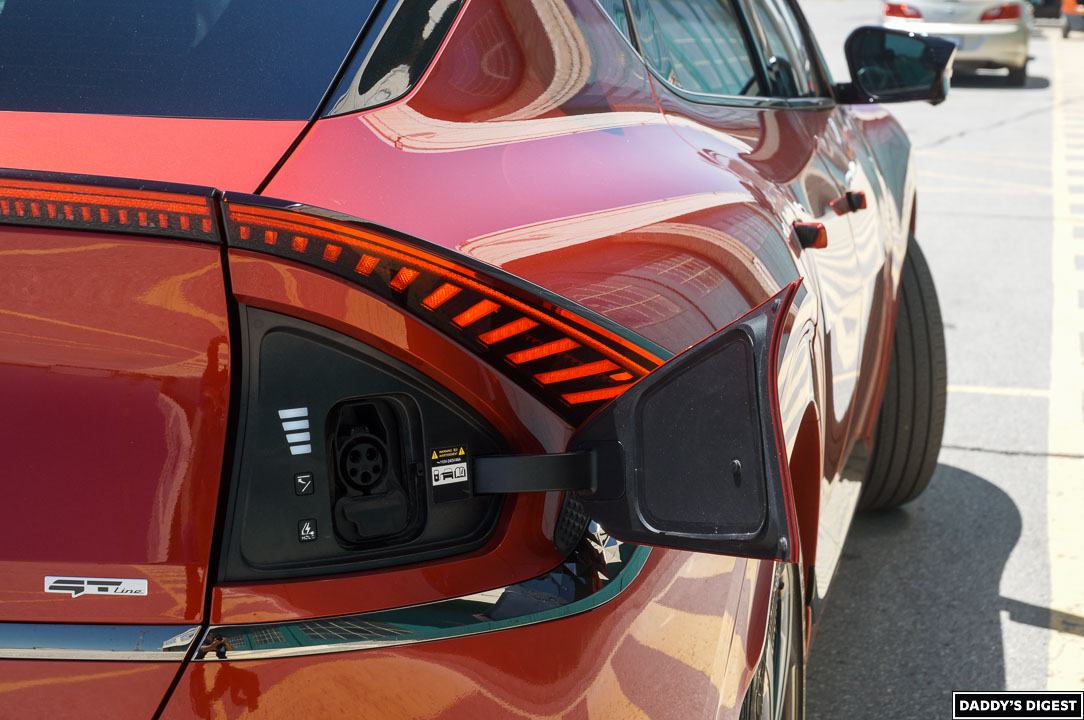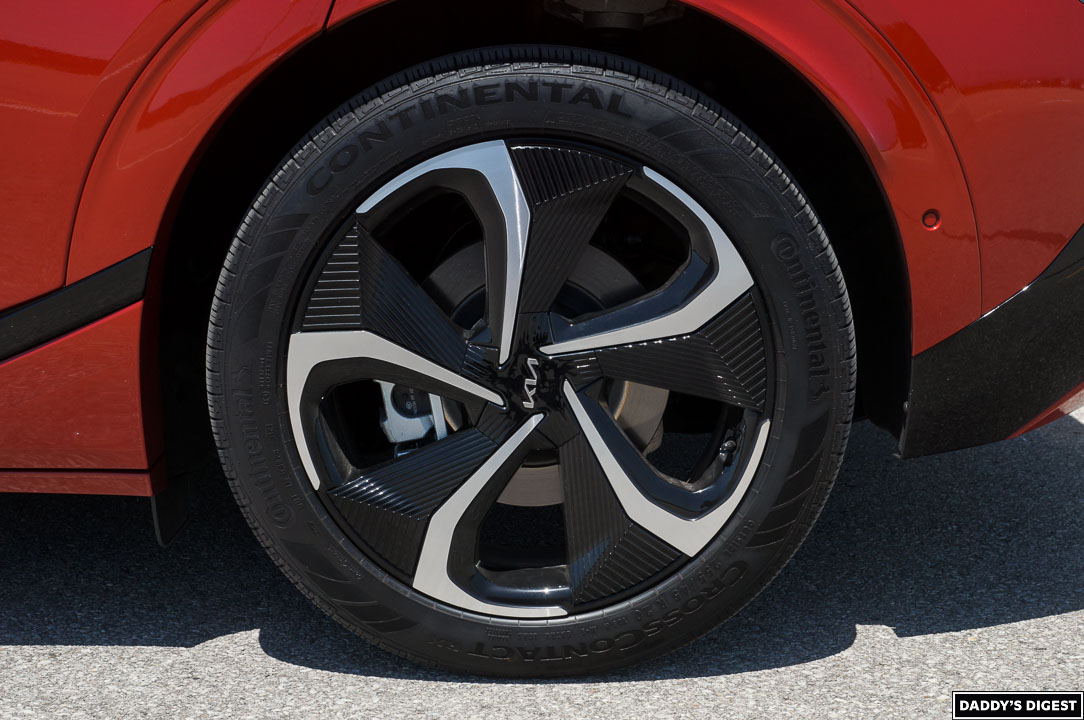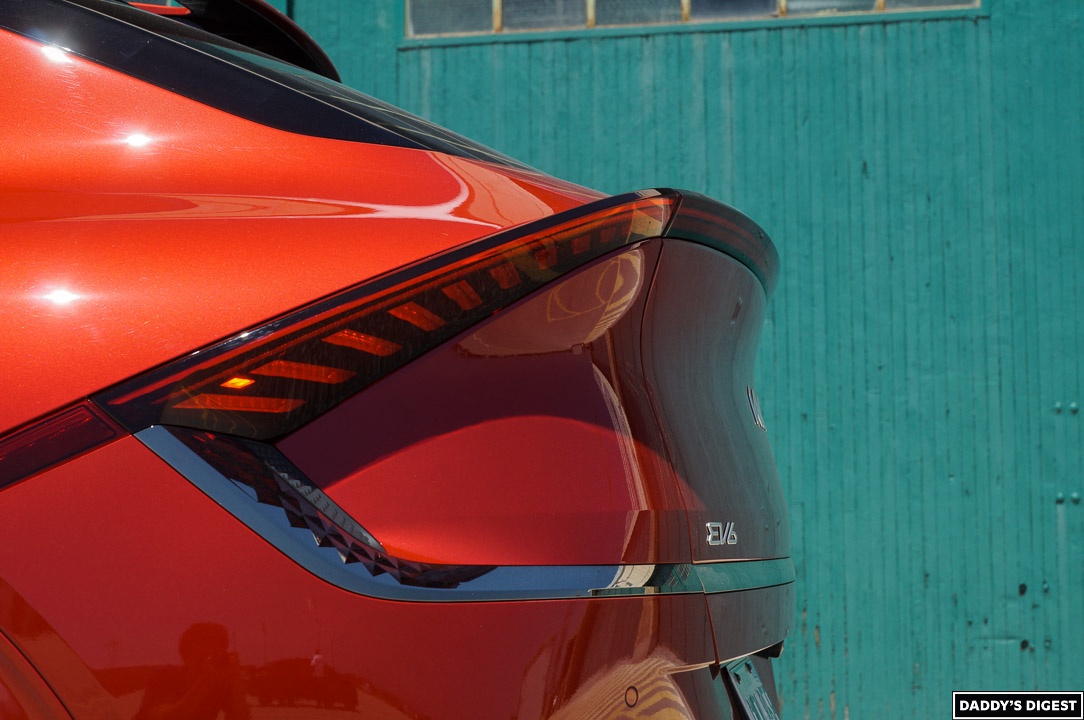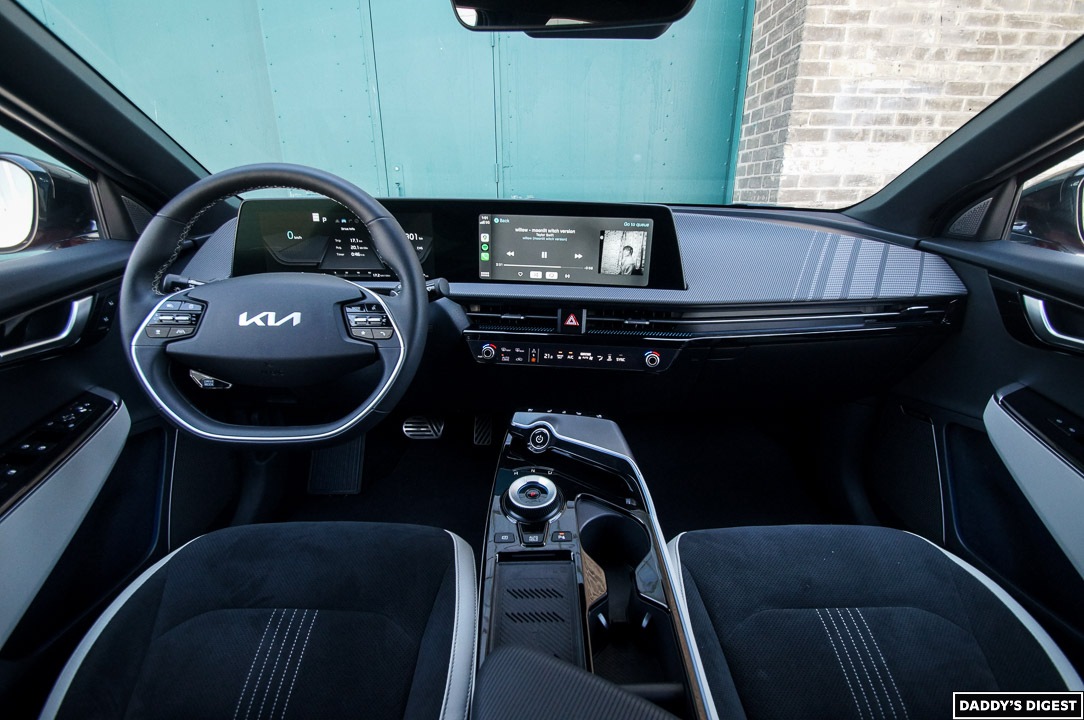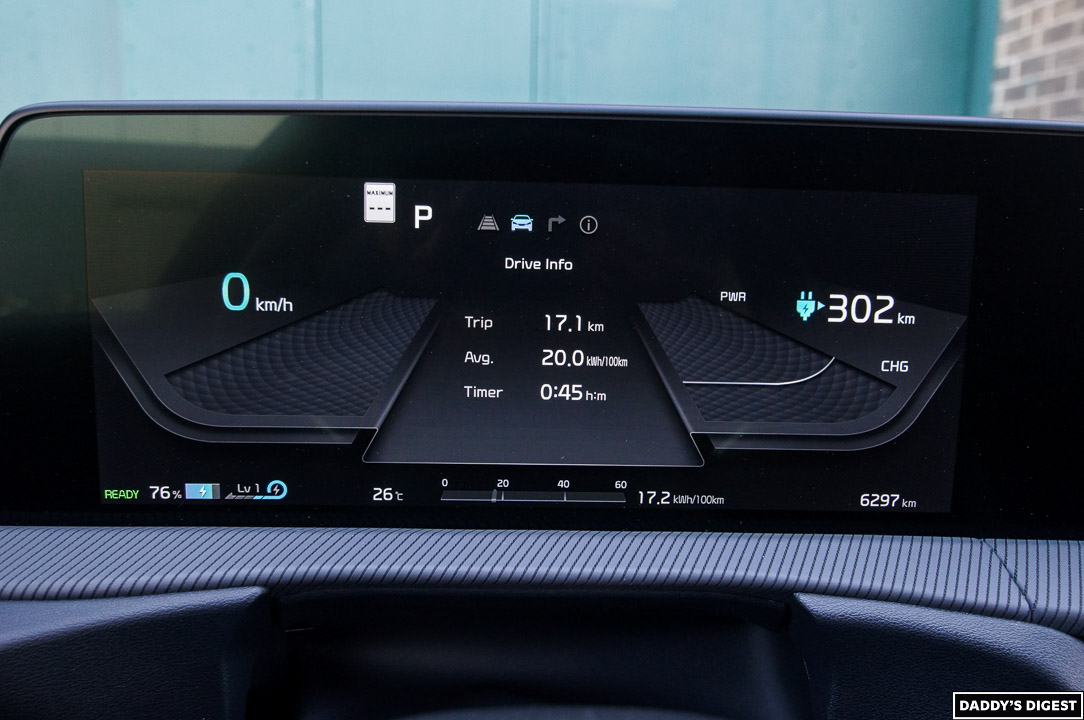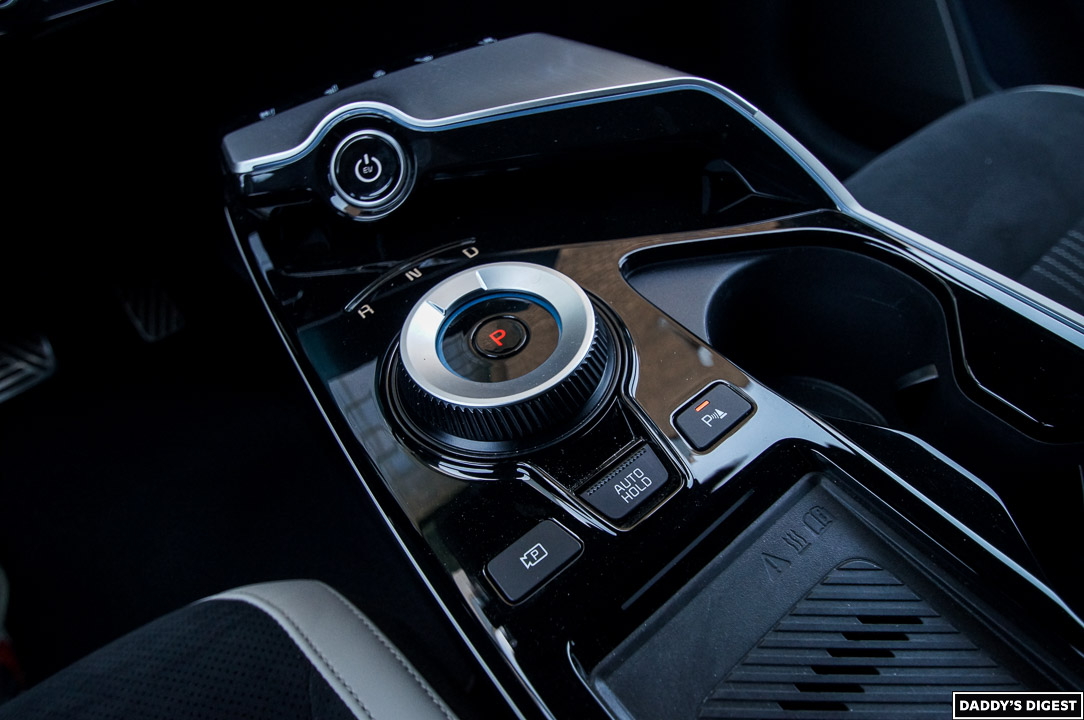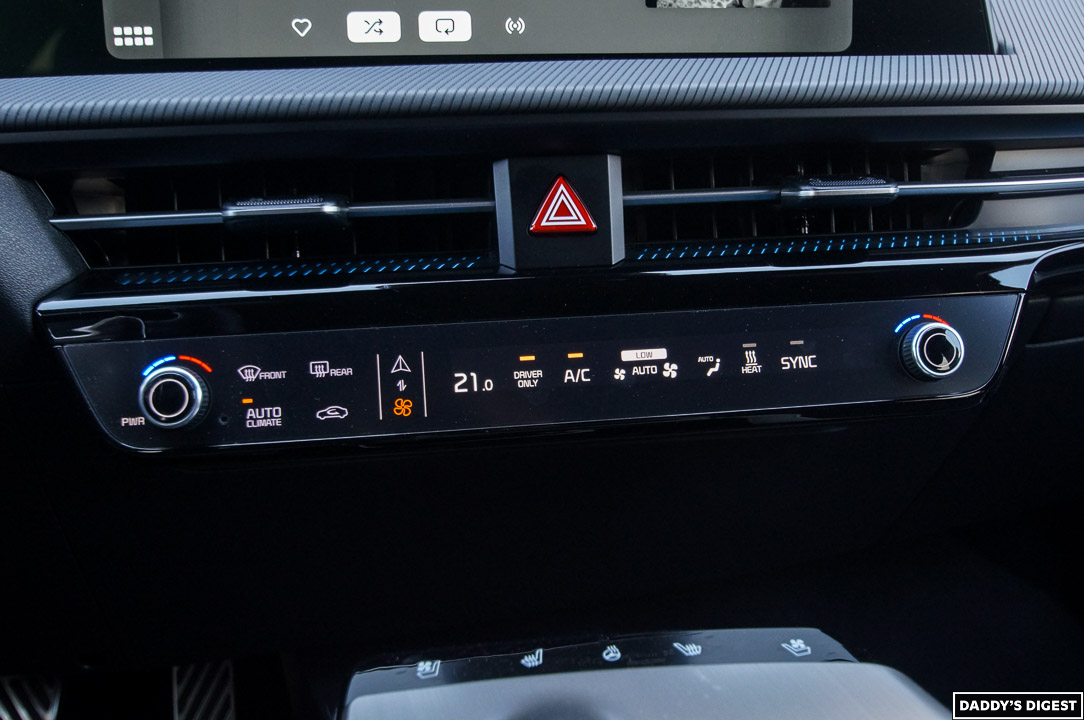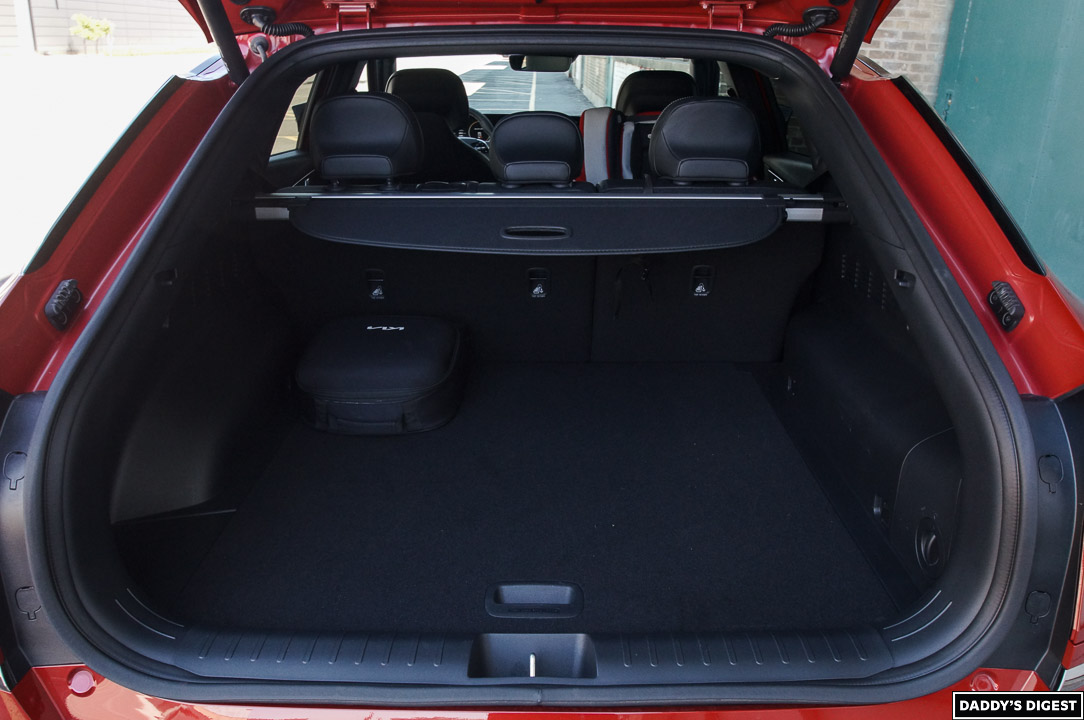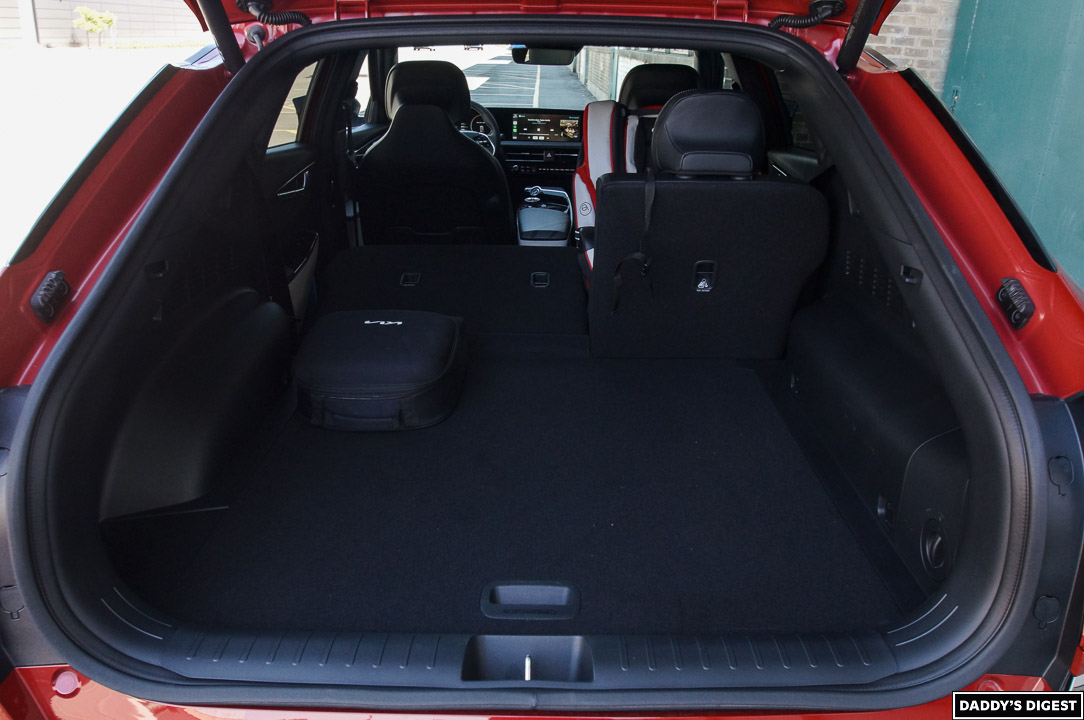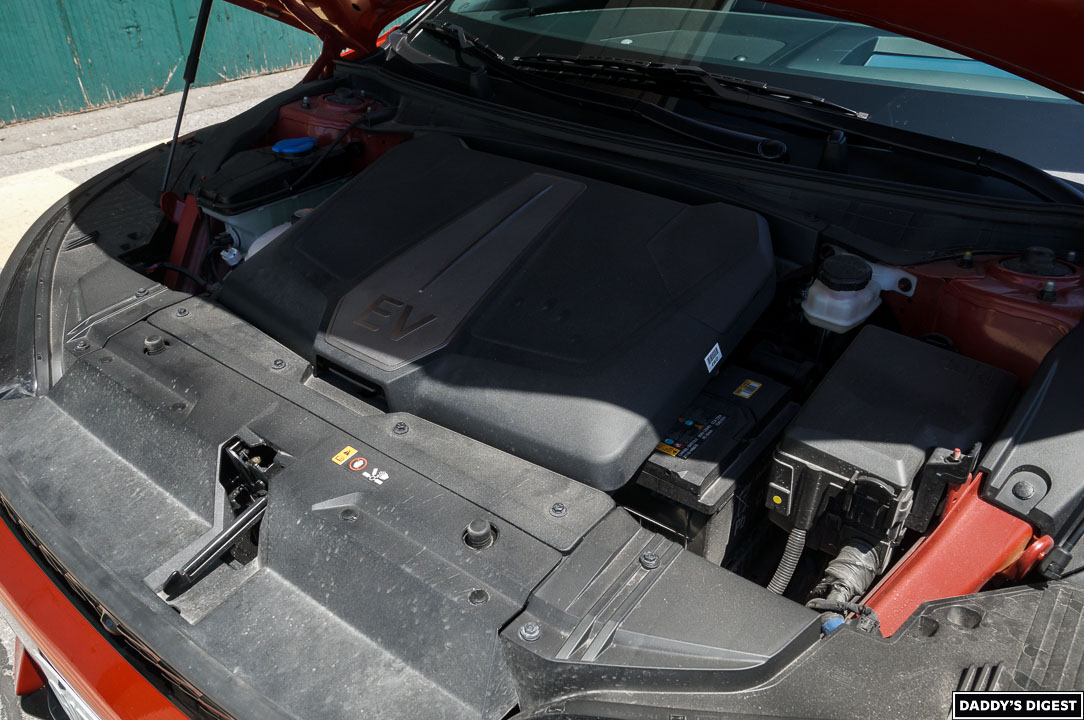In today’s Daddy’s Digest car review, we take a look at the 2022 Kia EV6 AWD Long Range, which is the latest mainstream electric vehicle from the Korean automaker. With the GT-Line Package 2, it’s also the top trim level in the EV6 range. While it does look pretty small in photos, don’t be fooled – this is about the size of a compact crossover sport utility, and has about the same level of practicality to boot. The EV6 tested was kindly loaned to us for a full week of testing courtesy of Kia Canada.
Looking the Part
The 2022 Kia EV6 features exterior styling with plenty of swooping lines and has just about zero straight ones, but it also manages to look like a fairly regular car. Its sibling, the IONIQ5 (reviewed here) from parent company Hyundai, looks a heck of a lot more futuristic and cannot be mistaken for anything else available on the road today. Here, the choice is easy: Want to stand out? Go with the Hyundai. Want to look a little tamer while still looking sharp? Go with the Kia.
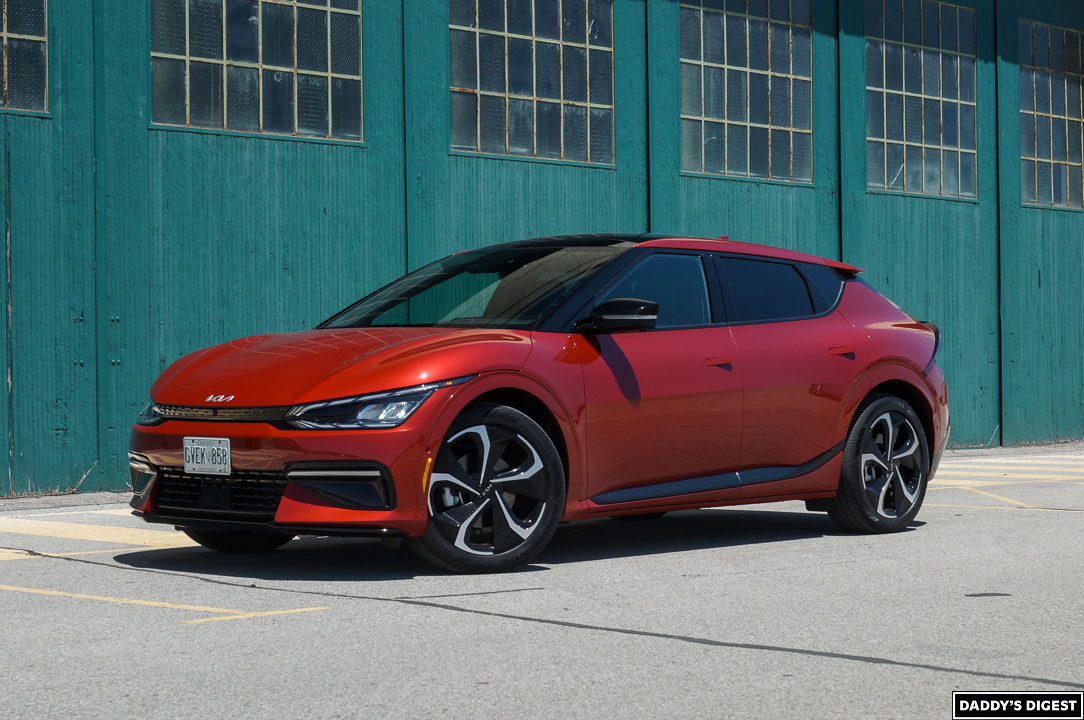
2022 Kia EV6: Batteries and Motors
Depending on the trim level and powertrain configuration, the EV6 comes in three different range capabilities: the base rear-wheel-drive Standard Range (SR) does 373 kilometres, the rear-wheel drive Long Range (LR) does 499 kilometres, and the all-wheel drive Long Range does 441 kilometres.
While the rear-drive LR model does get the best-rated range, it does so with 225 horsepower and 258 pound-feet of torque on tap. Going with the all-wheel drive adds a second motor and bumps up output to 320 horsepower and 446 pound-feet, which is what the test car was equipped with. With that much torque, flooring the accelerator provides break-neck acceleration to say the least, and the all-wheel drive will come in great handy! Single motor, rear-drive, Standard Range EV6 models get 167 horsepower and 258 pound-feet, which isn’t nearly as much, but don’t count it out for typical daily transportation.
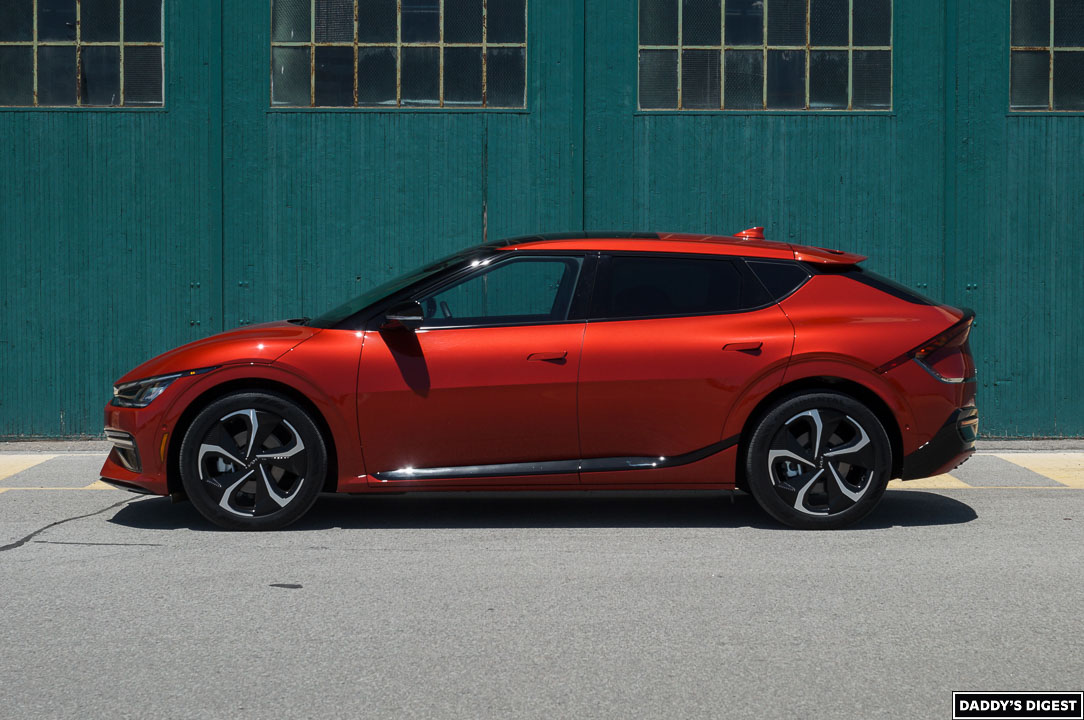
Real World Test: Toronto-Kincardine Round Trip
With the test car having a range of 441 kilometres, a single-day road trip was planned between Toronto and Kincardine. It’s a beautiful small town in Ontario on the eastern shores of Lake Huron, and the total expected mileage would be approximately 450 kilometres. With unplanned detours, air conditioning use in the summer, and at least a few occasions to stretch out the EV6 AWD LR’s 446 pound-feet of torque, it really wouldn’t be a good idea to plan on making the full round trip without charging.
In order to make it home in a timely manner, direct current fast charging (Level 3 DCFC) along the route would be required. While a 240-volt Level 2 charger can charge an EV6 overnight in seven to twelve hours depending on available capacity from the electrical service panel, DC fast charging cuts that time down greatly, but still depends on the capability of the charger. At the slowest 50-kilowatt (kW) DCFC stations, going from 10 to 80 percent charge takes 73 minutes, but at the max-rated 350 kW, this drops down to 18 minutes.
Smartphone apps like Plugshare are quite useful for planning out longer runs, and help to identify potentially unreliable or problematic public charging stations that should be avoided. And believe me, there are many, many DCFC sites that are out of commission – in general, Level 2 charging is absolutely required at home if you’re going to own a car like the 2022 Kia EV6. You can forget about regular 120-volt wall outlet charging: while you can, expect it to take days to get any sort of reasonable charge at all.
With the use of Plugshare, the plan was to stop in at a 50 kW DC fast charging station at the public library in the town of Arthur. Between home, Kincardine, and Arthur, this was about 320 kilometres, giving some leeway for any extra driving needed while in Kincardine. It also meant that the battery wasn’t nearly empty when pulling over to charge, and there would still be plenty of range left over once getting back to Toronto. The charging station in Arthur was rated fairly highly, and could likely be counted upon as long as the spot wasn’t being occupied by another electric vehicle, or even worse, by an internal combustion engine car – they call this getting ‘iced’.
Being a hot, humid summer day, plenty of air conditioning was used throughout the whole day, and 51 percent of the battery remained after getting to Kincardine. The drive back to Arthur left only 24 percent of charge remaining, and 40 minutes of charging got things back to about 70 percent – plenty to get home, and then some. These 40 minutes were a good opportunity to check up on work emails, as well as to catch a quick power nap before heading out into the home stretch during rush hour.
The 40 minutes of charging used approximately 38 kilowatt-hours (kWh) of energy, and cost just over ten dollars (Canadian) to do. Compared to a compact crossover SUV consuming 7.0 litres per 100 kilometres driven, that’s less than half the cost of gasoline, by comparison. The cheapest charging will happen on Level 2, which will still be a fraction of the cost of gas. If you have access to free charging at home or work, even better.
Overall, with the exception of Tesla Supercharger networks, public charging for everybody else has a bit longer to go before it can be widely adopted by the mainstream. Charger reliability needs to be improved, and charging speeds need to get better, as well. In Toronto proper, very few 350-kilowatt DCFC stations exist, and local grid capacity may stand in the way of market penetration. In rural areas such as Kincardine or Arthur, having more than one 50-kilowatt Level 3 DCFC station may prove to be a challenge. It’s not because of a lack of overall supply from power plants – it’s more of a local issue as the last mile in electricity distribution.
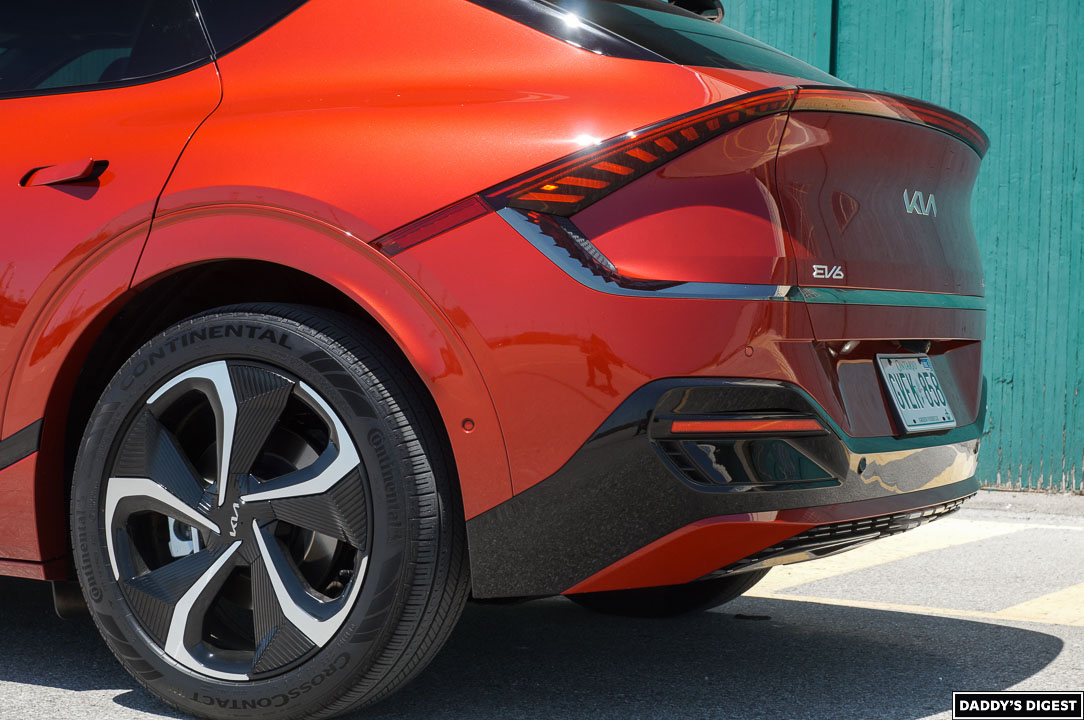
For Dads and Families
An important thing to note on the EV6 is that it’s a bit short on headroom – that cool styling doesn’t necessarily come for free in this regard. If you’re over six feet tall, make sure you try to sit in the front and rear seats of the EV6 before pulling the trigger on ordering one. The floor is likely raised a little bit in order to accommodate the storage of the battery packs, so there’s no free lunch there, either.
For cargo, children, and car seats, the Kia is a solid daily driver for families with one or two children. LATCH/ISOFIX anchors are easily accessible for the two outboard rear seats. Going three wide may be a challenge without purchasing lower profile child seats, so be sure to try before you buy in this area as well. Top tether anchors are available for all three rear seating positions.
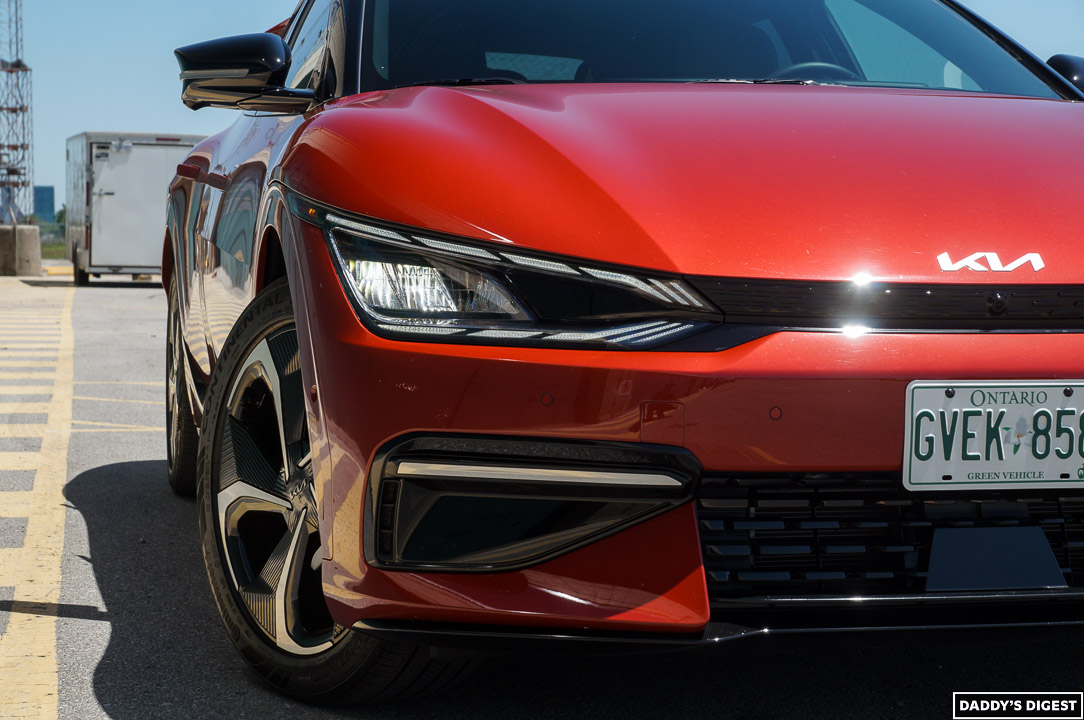
2022 Kia EV6: Bottom Line
The 2022 Kia EV6 starts at $44,995, and the AWD LR GT-Line with Package 2 tops the charts at an as-tested $61,995 Canadian. While the former is fairly spartan and has less overall range, the latter is a competitive electric vehicle that’s as good as any of them. With a full set of creature comforts and autonomous driver safety assists including automatic lane changes with Highway Drive Assist, the EV6 makes sense as a more cost-conscious alternative to a similarly equipped Tesla Model 3. The Kia is a great car, full stop, even if it doesn’t necessarily have the same brand cachet as the Tesla.
Gripes are few and far between: the headroom as mentioned earlier is one, and the second is oddball capacitive touch infotainment controls. Availability at your local Kia dealer may be a challenge too, so buyers who want an EV6 may need to dive into the 2023 model year in order to secure their own. These things aside, if this is what the future of electric motoring will be like, count us in.
